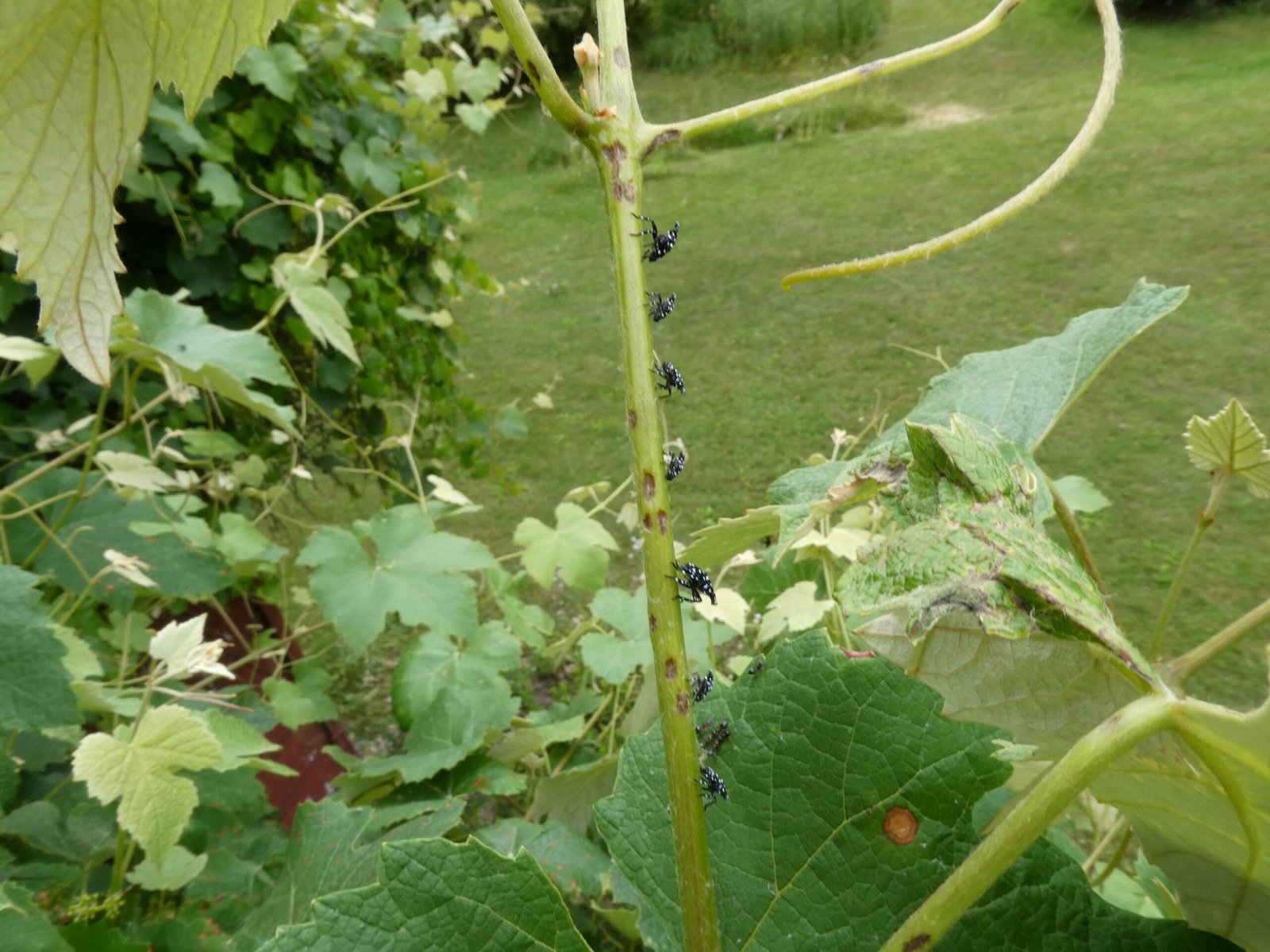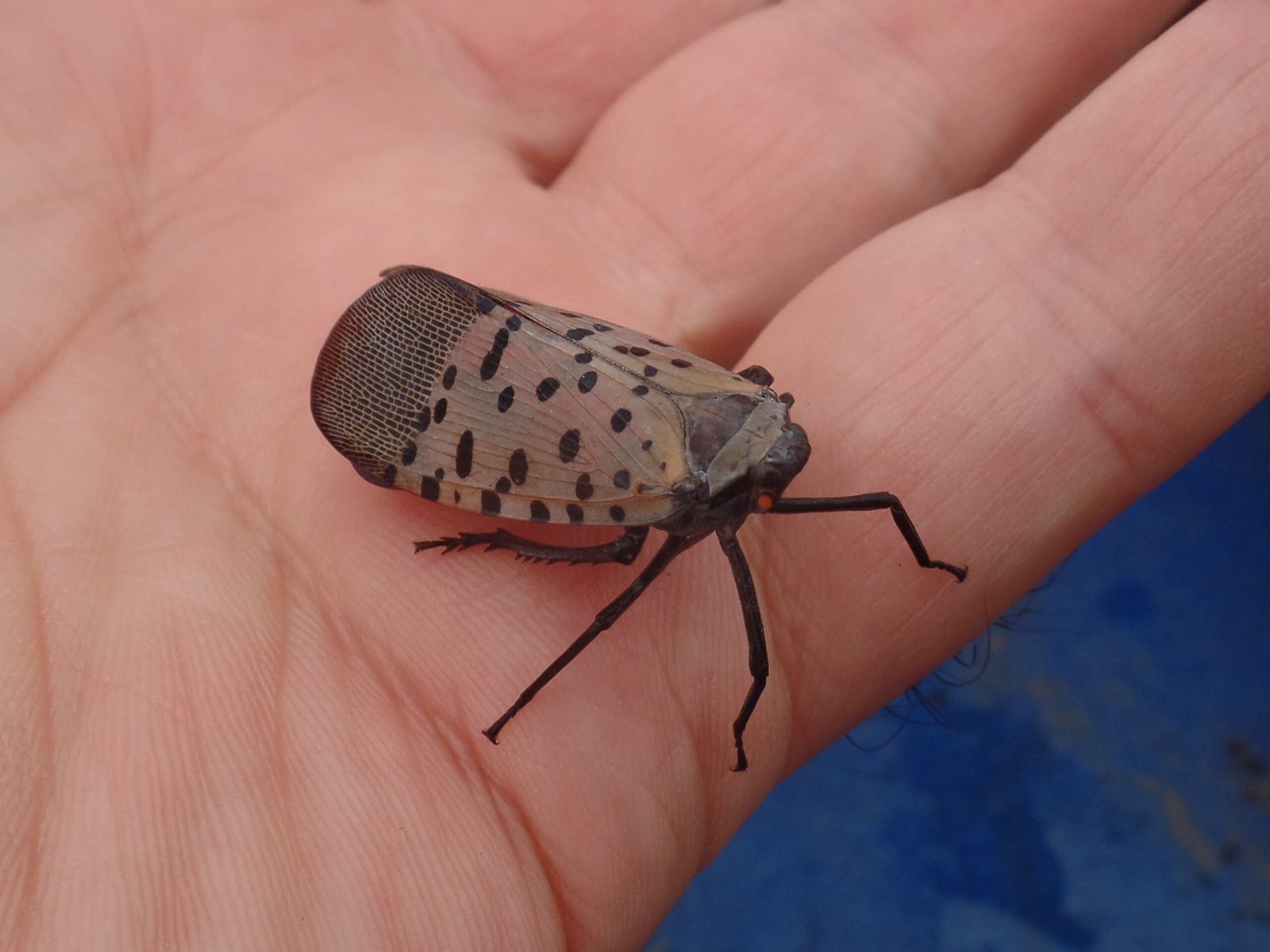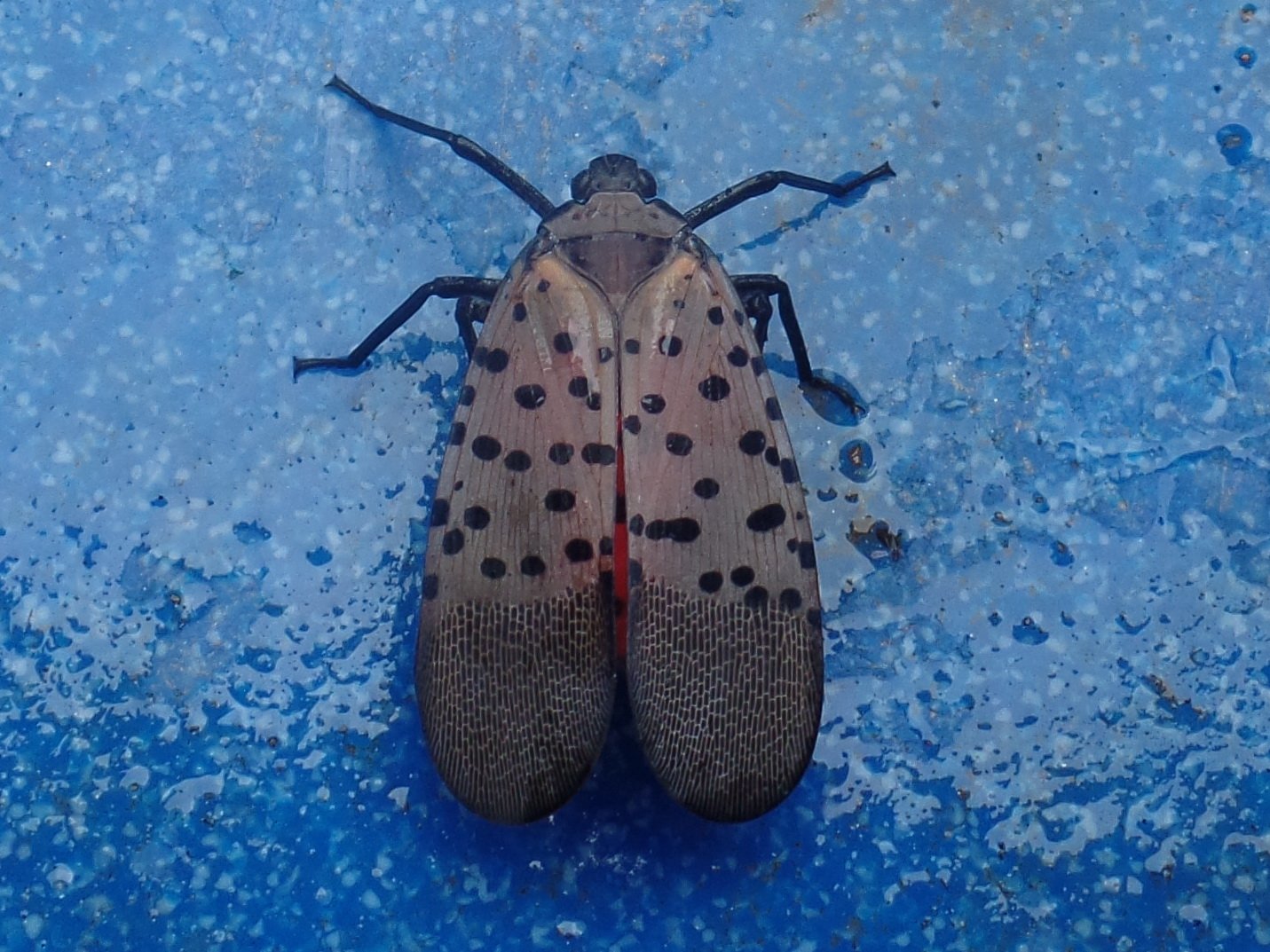In this post I’ll share a few fairly easy methods I’ve come up with to combat the spotted lanternfly. They’re safe, cost effective, and it’s likely you already have everything you will need to implement my techniques on your own.

My first encounter with them was late in the summer of 2020. I was kayaking in the Susquehanna River and spotted several struggling in the water. The river divides Harford from Cecil County Maryland and had temporarily halted their march south. However, overcoming the river didn’t take long and this is my second year battling them on my home turf. Since their initial “appearance” in Berks county Pennsylvania in 2014 , the spotted lanternfly has been steadily advancing across the Northeast destroying crops and causing approximately $50 million in economic damage each year.
These invasive insects have done hundreds of millions of dollars in damage. They didn’t just appear out of thin air. Somebody brought them in. Somebody was more concerned about their own profit margin than they were for the integrity of our shared ecosystem. There’s very little to go on. They arrived in the US in 2014, in Berks county Pennsylvania, most likely in a shipment of stone imported from Asia. When I did a quick Google search, the name “Rolling Rock Stone” seemed to come up a lot with “Spotted Lanternfly”. These hits were mostly YouTube videos, Flicker albums and seeded stories, applauding the companies efforts to combat the insect, despite the financial burden placed on them by the quarantine and the added expense associated with hiring a shipment inspector. They even had to cut down their beloved stand of Tree of Heaven, which was where the spotted lanternfly first appeared in the US. As it turns out, Rolling Rock Stone imports a lot of their products from southeast Asia, and according to a Bloomberg article : “Talk to folks in Berks county and they’ll tell you an egg mass arrived with a shipment for Rolling Rock Building Stone Inc., a specialty company about 6 miles from Beekman’s farm that routinely imports from China and India.” The president of the company, Gary Weller, claims there is no evidence that his business was ground zero and he was surprised when state entomologists discovered that his trees were crawling with lanternflies. “It’s something that’s going to haunt me for many years,” he says. “I would love to know where it came from, I really would.”
First encounter: In 2020 I saw several struggling in the Susquehanna river. Not knowing what they were, I rescued them and returned them to shore (fortunately I returned them to an area that was already under quarantine). Since then, I’ve seen many free themselves from the water.
Modus Operandi
Although Spotted Lanternflies have a preference for the Tree of Heaven, their native host plant in Asia, they have shown an eager willingness to eat crops and plants native to the US. They particularly like grapes and stone fruits but are also keen on shade trees. Rather than defoliate, they use their long proboscis to lap up sugars from inner tissues, weakening the plant. Their excrement, which is a sweet sticky substance, causes additional problems by encouraging fungal growth, causing further damage.
I spent years nurturing muscadine grapes vines I planted from seed. In 2021, the vines had just started producing and I had big plans for next years harvest. The next summer the vines were weighted down with fruit but by July, the spotted lanternflies were everywhere. Not only did they wipe out most of my muscadines, they also feasted on my hops vines, and a stand of willows I’d planted in 2016. By August, much of the leaves had fallen from the willows and hops, and most of the still unripe grapes were on the ground.
The Battle Begins
If I were to get any grapes in 2023 I had to take action. No way I was using any pesticides. My yard is a sanctuary to thousands of insects, birds, and mammals, and I’m not throwing them under the bus. I also know there is no such thing as a species selective trap. I had a bottle of a commercial, insecticidal soap. These products work through direct contact, so only the insects I sprayed with it would be affected. I couldn’t find anything online regarding its effectiveness against spotted lanternflies, but there was very little risk, so when the first of the nymphs started to appear in the spring I tried it out, and it worked! I quickly used up the rest of the bottle and when I went to order more I learned that this stuff is expensive. However, it’s actually fairly inexpensive to make your own. But there’s more you need to know, don’t use just any soap, many will damage plants.



Homemade Insecticidal Soap
When used correctly, insecticidal soap will not harm the plant, pollinators or other insects (as long as you do not directly spray it on them). You could buy it, but you’re going to need gallons of it on a daily basis. It’s easy and relatively inexpensive to make it yourself, plus, wouldn’t you like to know exactly what you’re spraying on your plants?

Soap can be a broad term: There’s more than one type of soap and some will burn plant leaves. Be sure to use a liquid soaps made using potassium hydroxide. It’s technically not an ingredient. It’s the saponifier that convert fats into soap. So it’s unlikely to show up on the label. Instead, the bottle should be labeled as a pure castile soap. I highly recommend Dr. Bronner’s soap. But whatever you get, make sure there are no essential oils or other additives which could potentially leave residues, harmful to the plant or other insects. Don’t forget to test a small amount on your plants to make sure they can tolerate it.
By the way, I’ve found the 32oz locally for the same price Amazon sells the 16oz bottle.
Choose Your Weapon Wisely
A conventional bottle sprayer is okay, but you’ll get much better results if you step up your game and invest in a pump sprayer. A two gallon model is just the right size for me. With the added force, you can hit a spotted lanternfly from 15 feet away. A thin jet of water is what you’ll want to achieve, so an adjustable nozzle is a good option. The nozzle that came with mine wasn’t great, so I replaced it with one made by Loc-line that I salvaged from another project. It can be adjusted to any angle. Spotted lanternflies will move to the opposite side of the vine when they see you coming, so this really comes in handy.

Spray Strategy

- You don’t want to spray the whole plant, it’s not necessary, nor is it good for the plant or other insects. Soap works through direct contact, so just spray the spotted lanternflies.
- Start out spraying daily. It takes a while to see a sizable difference. The ones you kill are replaced by those from neighboring properties, but gradually, these reserves will be depleted (unless you live next to an orchard or vineyard) and you can spray less frequently.
- As I mentioned earlier, the nymphs are generally up high in the spring on new growth. The adults appear to prefer the more mature vines or branches. They have a substantial proboscis, which is just what it needs to penetrate old growth. I would imagine they can get a lot more nutrients from these parts of the plants, so that’s where to look for them. This is a bonus because we will get less soap on the leaves if we’re targeting the trunk.


Left: Spring nymphs feeding high up from new growth grape vines. Right: An adult feeding from a willow trunk.
You’re Not Done Yet!
Best not to leave that soap on your plants. Combined with high temperatures, any soap will burn the leaves. Give your plants a good soaking with the garden hose. Bonus! This will also knock any remaining spotted lanternflies off your plants. I set the hose on FULL. When the lanternflies are on the grass, you can switch to JET and finish them off. The CONE setting is also useful. Covered by the cone of water, they usually stay put and are easy to manually squish.
One last suggestion: Foster Alliances


I know a lot of people who are really uncomfortable around wasps and hornets and would consider letting the Manson family into their house before allowing any insect with a stinger to cohabitate. But I’m telling you, these little guys are your allies. We all know that the majority of wasp pollinate and some even parasitize garden pests. Well, if you let European hornets onto your turf, they will take care of those pesky spotted lanternflies for you! This massive nest contains hundreds of hornets and they are all hungry for lanternfly. I know they are eating them, because they leave their little wings….. and heads all around the yard. And as long as you don’t bother their nest, they won’t bother you. This nest, which is about the size of a bulldog, is directly above the workbench in our garden shed. I’m in and out of there all the time and they’ve left me alone.






